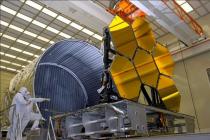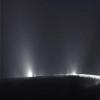As Plato said, science rests on sensations. The 10 random scientific discoveries given below are further confirmation of this. Of course, no one has canceled scientific schools, scientific work, and, in general, entire lives devoted to science, but luck and chance can sometimes also do their job.
Penicillin
The invention of penicillin - a whole group of antibiotics that makes it possible to treat many bacteriological infections - is one of the long-standing scientific legends, but in reality it is just a story about dirty dishes. Scottish biologist Alexander Fleming decided to interrupt his laboratory research on staphylococcus in the laboratory and took a month's leave. Upon arrival, he discovered strange mold on the abandoned dishes with bacteria - mold that killed all the bacteria.
Microwave
Sometimes a light snack is all it takes to make a scientific discovery. American engineer Percy Spencer, who worked for the Raytheon company, one day, walking past a magnetron (a vacuum tube that emitted microwaves), noticed that the chocolate in his pocket had melted. In 1945, after a series of experiments (including an exploding egg), Spencer invented the first microwave oven. The first microwave ovens, like the first computers, looked bulky and unrealistic, but in 1967, compact microwave ovens began to appear in American homes.
Velcro
Not only can snacks be beneficial for science, but so can a walk in the fresh air. While traveling through the mountains in 1941, Swiss engineer George Mestral noticed a burdock that had clung to his pants and the fur of his dog. Upon closer inspection, he saw that the burdock hooks clung to everything that had the shape of a loop. This is how the Velcro type fastener appeared. In English it sounds like "Velcro", which is a combination of the words "velvet" (corduroy) and "crochet" (crochet). The most notable user of Velcro in the 60s was NASA, which used it in astronaut suits and to secure objects in zero gravity.
The Big Bang Theory
The discovery of today's dominant theory of the origin of the Universe began with noise similar to radio interference. In 1964, while working with the Holmdel antenna (a large horn-shaped antenna that was used as a radio telescope in the 1960s), astronomers Robert Wilson and Arno Penzias heard a background noise that puzzled them greatly. Having rejected most of the existing causes of noise, they turned to Robert Dicke's theory, according to which the radiation residues from the Big Bang that formed the Universe became background cosmic radiation. 50 kilometers from Wilson and Penzias, at Princeton University, Dicke himself was searching for this background radiation, and when he heard about their discovery, he told his colleagues: “Guys, this looks like a sensation.” Wilson and Penzias later received the Nobel Prize.
Teflon
In 1938, scientist Roy Plunkett was working on ways to make refrigerators more suitable for the home by replacing the then-available refrigerant, which consisted primarily of ammonia, sulfur dioxide and propane. After he opened the container containing one of the samples he was working on, Plunkett discovered that the gas inside had evaporated, leaving behind a strange, slippery rosin-like substance that was resistant to high temperatures. In the 1940s, the material was used in a nuclear weapons project and a decade later in the automobile industry. It was only in the 60s that Teflon began to be used in the way that is familiar to us - for non-stick cookware.

Vulcanizate
In the 1830s, vegetable rubber was used to make water-repellent boots, but it had one big problem - instability to high and low temperatures. It was believed that rubber had no future, but Charles Goodyear disagreed with this. After years of trying to make rubber more durable, the scientist stumbled upon what would become his greatest discovery entirely by accident. In 1839, while demonstrating one of his last experiments, Goodyear accidentally dropped rubber on a hot stove. The result was a charred leather-like substance in an elastic rim. Thus, the rubber became resistant to temperatures. Goodyear made no profit from his invention, and died leaving huge debts. Already 40 years after his death, the still famous company “Goodyear” took his name.
Coca Cola
The inventor of Coca-Cola was not a businessman, a candy merchant, or anyone else who dreamed of getting rich. John Pemberton just wanted to invent a normal cure for headaches. A pharmacist by profession, he used two ingredients: coca leaves and kola nuts. When his laboratory assistant accidentally mixed them with carbonated water, the world saw the first Coca-Cola. Unfortunately, Pemberton died before his mixture became one of the most popular drinks on Earth.

Radioactivity
Bad weather can also lead to a scientific discovery. In 1896, French scientist Antoine Henri Becquerel conducted an experiment on a crystal enriched with uranium. He believed that sunlight was the reason the crystal burned its image onto the photographic plate. When the sun disappeared, Becquerel decided to pack his things to continue the experiment on another clear day. A few days later, he took the crystal out of his desk drawer, but the image on the photographic plate lying on top was, as he described, hazy. The crystal emitted rays that fogged the plate. Becquerel did not think about the name of this phenomenon and suggested continuing the experiment to two colleagues - Pierre and Marie Curie.
Viagra
Angina is a common name for chest pain, especially spasms in the coronary arteries. The pharmaceutical company Pfizer has developed a pill called UK92480 to narrow these arteries and relieve pain. However, the pill, which failed in its original purpose, had a very strong side effect (you can probably guess what it was) and was later renamed Viagra. Last year, Pfizer sold $288 million worth of those little blue pills.
Smart dust
Housework can be frustrating at times, especially when dust covers your entire face. Jamie Link, a chemist at the University of California, San Diego, worked on one silicon chip. When it accidentally crashed, the tiny pieces still continued to send signals, acting as little sensors. She dubbed these small, self-assembling particles “smart dust.” Today, “smart dust” has enormous potential, especially in the fight against tumors in the body.History shows that some scientific discoveries, including those that turned the world upside down, were made completely by accident. It is enough to recall Archimedes, who, having immersed himself in a bath, discovered the law, later named after him, about bodies immersed in water and their buoyant force, or Newton, on whom the famous apple fell. And finally, Mendeleev, who saw his table of elements in a dream. Perhaps some of this is an exaggeration, but there are very specific examples showing that in science, too, much depends on chance. Wired magazine collected some of them.
1. Viagra.

As you know, Viagra was originally developed as a remedy for sore throats. Men all over the world should be grateful to the residents of the Welsh town of Merthyr Tydfil. It was here that a remarkable side effect of the drug was discovered during trials in 1992.

Swiss scientist Albert Hofmann became the first person to taste acid in 1943. He noticed the effect of lysergic acid diethylamide on himself when he was conducting medical research on this substance and its effect on the process of childbirth.
3. X-ray.

In the 19th century, many scientists were interested in the rays that appear as a result of electrons striking a metal target. However, X-ray radiation was discovered by the German scientist Wilhelm Roentgen in 1895. He exposed various objects to this radiation and, while changing them, accidentally saw a projection of the bones of his own hand appear on the wall.
4. Penicillin.

Scottish scientist Alexander Fleming studied influenza in 1928. One day he noticed how blue-green mold (natural penicillin is produced by mold fungi) growing in one of the Petri dishes killed all the staphylococci present there.
5. Artificial sweeteners.
The three most common sugar substitutes were discovered only because scientists forgot to wash their hands. Cyclamate (1937) and aspartame (1965) were by-products of medical research, and saccharin (1879) was accidentally discovered during research on coal tar derivatives.
6. Microwaves.
Microwave emitters (magnetrons) powered Allied radar during World War II. New applications were discovered in 1946, when a magnetron melted a chocolate bar in the pocket of Percy Spencer, one of the engineers at the American company Raytheon.
7. Brandy.
In the Middle Ages, wine merchants often evaporated the water from the transported drink so that it did not spoil and took up less space. Soon, someone resourceful decided to do without the recovery phase. Thus brandy was born.
8. Vulcanized rubber.
Unvulcanized rubber is very unstable to external influences and smells bad. Charles Goodyear, after whom the Goodyear company was named, discovered the vulcanization process when he accidentally placed a mixture of rubber and sulfur on a hot plate.
9. Potato chips.
Chef George Crum invented the popular snack in 1853. When one of his customers complained that his potatoes were cut too thick, he took the potatoes, cut them into pieces almost as thick as a sheet of paper, and fried them. This is how chips were born.
10. Buns with raisins.
It is also worth mentioning here the legend described by Moscow expert journalist and writer Vladimir Gilyarovsky, that the raisin bun was invented by the famous baker Ivan Filippov. Governor General Arseny Zakrevsky, who once bought a fresh cod, suddenly discovered a cockroach in it. Filippov, called to the carpet, grabbed the insect and ate it, declaring that the general was mistaken - this was the highlight. Returning to the bakery, Filippov ordered an urgent start to baking raisin buns in order to justify himself to the governor.
History shows that some scientific discoveries, including those that turned the world upside down, were made completely by accident. It is enough to recall Archimedes, who, having immersed himself in a bath, discovered the law, later named after him, about bodies immersed in water and their buoyant force, or Newton, on whom the famous apple fell. And finally, Mendeleev, who saw his table of elements in a dream. Perhaps some of this is an exaggeration, but there are very specific examples showing that in science, too, much depends on chance. Wired magazine collected some of them.
1. Viagra.

As you know, Viagra was originally developed as a remedy for sore throats. Men all over the world should be grateful to the residents of the Welsh town of Merthyr Tydfil. It was here that a remarkable side effect of the drug was discovered during trials in 1992.

Swiss scientist Albert Hofmann became the first person to taste acid in 1943. He noticed the effect of lysergic acid diethylamide on himself when he was conducting medical research on this substance and its effect on the process of childbirth.
3. X-ray.

In the 19th century, many scientists were interested in the rays that appear as a result of electrons striking a metal target. However, X-ray radiation was discovered by the German scientist Wilhelm Roentgen in 1895. He exposed various objects to this radiation and, while changing them, accidentally saw a projection of the bones of his own hand appear on the wall.
4. Penicillin.

Scottish scientist Alexander Fleming studied influenza in 1928. One day he noticed how blue-green mold (natural penicillin is produced by mold fungi) growing in one of the Petri dishes killed all the staphylococci present there.
5. Artificial sweeteners.
The three most common sugar substitutes were discovered only because scientists forgot to wash their hands. Cyclamate (1937) and aspartame (1965) were by-products of medical research, and saccharin (1879) was accidentally discovered during research on coal tar derivatives.
6. Microwaves.
Microwave emitters (magnetrons) powered Allied radar during World War II. New applications were discovered in 1946, when a magnetron melted a chocolate bar in the pocket of Percy Spencer, one of the engineers at the American company Raytheon.
7. Brandy.
In the Middle Ages, wine merchants often evaporated the water from the transported drink so that it did not spoil and took up less space. Soon, someone resourceful decided to do without the recovery phase. Thus brandy was born.
8. Vulcanized rubber.
Unvulcanized rubber is very unstable to external influences and smells bad. Charles Goodyear, after whom the Goodyear company was named, discovered the vulcanization process when he accidentally placed a mixture of rubber and sulfur on a hot plate.
9. Potato chips.
Chef George Crum invented the popular snack in 1853. When one of his customers complained that his potatoes were cut too thick, he took the potatoes, cut them into pieces almost as thick as a sheet of paper, and fried them. This is how chips were born.
10. Buns with raisins.
It is also worth mentioning here the legend described by Moscow expert journalist and writer Vladimir Gilyarovsky, that the raisin bun was invented by the famous baker Ivan Filippov. Governor General Arseny Zakrevsky, who once bought a fresh cod, suddenly discovered a cockroach in it. Filippov, called to the carpet, grabbed the insect and ate it, declaring that the general was mistaken - this was the highlight. Returning to the bakery, Filippov ordered an urgent start to baking raisin buns in order to justify himself to the governor.
History shows that some scientific discoveries, including those that turned the world upside down, were made completely by accident.
It is enough to recall Archimedes, who, having immersed himself in a bath, discovered the law, later named after him, about bodies immersed in water and their buoyant force, or Newton, on whom the famous apple fell. And finally, Mendeleev, who saw his table of elements in a dream.
Perhaps some of this is an exaggeration, but there are very specific examples showing that in science, too, much depends on chance. Wired magazine collected some of them:
1. Viagra
As you know, Viagra was originally developed as a remedy for sore throats. Men all over the world should be grateful to the residents of the Welsh town of Merthyr Tydfil. It was here that a remarkable side effect of the drug was discovered during trials in 1992.
2.LSD
Swiss scientist Albert Hofmann became the first person to taste acid in 1943. He noticed the effect of lysergic acid diethylamide on himself when he was conducting medical research on this substance and its effect on the process of childbirth.
3. X-ray
In the 19th century, many scientists were interested in the rays that appear as a result of electrons striking a metal target. However, X-ray radiation was discovered by the German scientist Wilhelm Roentgen in 1895. He exposed various objects to this radiation and, while changing them, accidentally saw a projection of the bones of his own hand appear on the wall.
4. Penicillin
Scottish scientist Alexander Fleming studied influenza in 1928. One day he noticed how blue-green mold (natural penicillin is produced by mold fungi) growing in one of the Petri dishes killed all the staphylococci present there.
5. Artificial sweeteners
The three most common sugar substitutes were discovered only because scientists forgot to wash their hands. Cyclamate (1937) and aspartame (1965) were by-products of medical research, and saccharin (1879) was accidentally discovered during research on coal tar derivatives.
6. Microwave ovens
Microwave emitters (magnetrons) powered Allied radar during World War II. New application possibilities were discovered in 1946, when a magnetron melted a chocolate bar in the pocket of Percy Spencer, one of the engineers at the American company Raytheon.
7. Brandy
In the Middle Ages, wine merchants often evaporated the water from the transported drink so that it did not spoil and took up less space. Soon, someone resourceful decided to do without the recovery phase. Thus brandy was born.
8. Vulcanized rubber
Unvulcanized rubber is very unstable to external influences and smells bad. Charles Goodyear, after whom the Goodyear company was named, discovered the vulcanization process when he accidentally placed a mixture of rubber and sulfur on a hot plate.
9. Potato chips
Chef George Crum invented the popular snack in 1853. When one of his customers complained that his potatoes were cut too thick, he took the potatoes, cut them into pieces almost as thick as a sheet of paper, and fried them. This is how chips were born.
10. Raisin buns
It is also worth mentioning here the legend described by Moscow expert journalist and writer Vladimir Gilyarovsky, that the raisin bun was invented by the famous baker Ivan Filippov. Governor General Arseny Zakrevsky, who once bought a fresh cod, suddenly discovered a cockroach in it. Filippov, called to the carpet, grabbed the insect and ate it, declaring that the general was mistaken - this was the highlight. Returning to the bakery, Filippov ordered an urgent start to baking raisin buns in order to justify himself to the governor.
Random coincidences can not only amuse and surprise. Many scientific discoveries and inventions that have changed our lives were made by accident. This post is about such random discoveries and inventions.
One of the first accidentally discovered laws in physics was Archimedes' law. One day, King Hiero instructed Archimedes to check whether his crown was made of pure gold or whether the jeweler mixed a significant amount of silver into it. Archimedes knew the density of gold and silver, but the difficulty was to accurately determine the volume of the crown: after all, it had an irregular shape. Archimedes pondered this problem all the time. One day he was taking a bath, and then a brilliant idea came to his mind: by immersing the crown in water, you can determine its volume by measuring the volume of water displaced by it. According to legend, Archimedes jumped naked into the street shouting “Eureka!”, i.e. “Found it!” And indeed at that moment the fundamental law of hydrostatics was discovered. But how did he determine the quality of the crown? To do this, Archimedes made two ingots: one of gold, the other of silver, each of the same weight as the crown. Then he put them one by one in a vessel with water and noted how much its level had risen. Having lowered the crown into the vessel, Archimedes established that its volume exceeded the volume of the ingot. Thus the master’s dishonesty was proven.
The phenomenon of radioactivity was yet another discovery made by accident. In 1896, the French physicist A. Becquerel, while working on the study of uranium salts, wrapped fluorescent material in an opaque material along with photographic plates. He discovered that the photographic plates were completely exposed. The scientist continued his research and discovered that all uranium compounds emit radiation.
A little earlier, in 1895, X-rays were discovered. The German physicist Roentgen (1845-1923) discovered this type of radiation by accident while studying cathode rays. Roentgen's observation was as follows. He worked in a darkened room, trying to figure out whether the newly discovered cathode rays (i.e. beams of electrons) could pass through a vacuum tube or not. By chance, he noticed that a blurry greenish cloud appeared on a chemically cleaned screen several feet away. It was as if a faint flash from a telecoil was reflected in a mirror. He conducted research for seven weeks, practically without leaving the laboratory. It turned out that the cause of the glow is direct rays emanating from the cathode ray tube, that the radiation produces a shadow and cannot be deflected by a magnet, and much more. It also became clear that human bones cast a denser shadow than the surrounding soft tissue, which is still used in fluoroscopy. And the first X-ray image appeared in 1895 - it was a photo of Madame Roentgen’s hand with a clearly visible gold ring.
“...Everything that is hidden and unknown, and which no scientific research can discover, will most likely be discovered only by chance by a person who is the most persistent in the search and the most attentive to everything that has even the slightest relation to the subject of the search.” This is what Charles Goodyear said, and he had reason for it. After expeditions to America, Europeans became aware of rubber - a soft and elastic material from which the natives made various objects. In Europe, rubber began to be used to make waterproof clothing and shoes. But pure rubber smelled bad, when heated it became soft and viscous, and at low temperatures it hardened like stone. Goodyear once purchased a rubber life preserver from a store. After that, he improved the valve on this wheel, and went with this invention to a company producing wheels, but the company agent said that if he wanted to get rich, he should invent a way to improve rubber. Goodyear had extremely little knowledge of chemistry, but he seized on this idea and began experiments, trying to mix rubber with various substances. He mixed a variety of substances with rubber resin, from salt to ink, boiled it in a solution of quicklime, etc. He spent four years in futile attempts and got into huge debts. Finally one day he accidentally heated a mixture of rubber and sulfur on the kitchen stove. The result was rubber that was elastic, but at the same time did not freeze in the cold and did not melt in the heat. This allowed Goodyear to pay off all his debts, and the discovery of the rubber vulcanization process became an impetus for the development of industry.
In 1942, at the height of World War II, Harry Coover (pictured), a chemist for the American company Eastman Kodak, led a scientific team that was trying to create a transparent plastic for use in optical sights. In one of the unsuccessful experiments with cyanoacrylates, Coover accidentally touched the sample and suddenly stuck tightly - this experience is now well known to anyone who has ever spilled superglue on their hands or touched surfaces coated with it. Coover later discovered that cyanoacrylates have the unusual property of rapid polymerization - they combine into a sticky mass in the presence of the smallest amount of moisture. Thus, a glue was invented that glues anything very well, without requiring either heat or pressure to activate it.
Teflon was first produced by chemist Roy Plunkett in April 1938. He was looking for a new refrigerant, which he wanted to synthesize from hydrochloric acid and tetrafluoroethylene (TFE) gas pumped under pressure into cylinders. To prevent these cylinders from exploding in the laboratory, they were lined with “dry ice” - solid carbon dioxide. But instead of gas, Plunkett found there only white flakes of a paraffin-like substance, incredibly slippery, chemically stable, resistant to heat, water and acids. The material took its place in frying pans later thanks to the French engineer Marc Gregoire, who in 1945 developed a method for applying polytetrafluoroethylene to aluminum surfaces. The Tefal brand is a combination of Teflon and aluminum.
People have been looking for ways to easily make fire for a very long time. In 1826, the English chemist and pharmacist John Walker invented the first truly convenient method - sulfur matches, and he did it completely by accident. One day he was mixing chemicals with a stick, and a dried drop formed at the end of the stick. To remove it, he struck the floor with a stick. Fire broke out! Walker immediately appreciated the practical value of his discovery and began experimenting and then producing matches. One box contained 50 matches and cost 1 shilling. Each box came with a piece of sandpaper folded in half.
In 1928, Alexander Fleming discovered penicillin while researching influenza. He was not very neat, did not wash laboratory glassware immediately after the experiment and did not throw away flu cultures for 2-3 weeks in a row, accumulating 30-40 cups on his workbench at a time. So, one day he discovered mold in one of the Petri dishes, which, to his surprise, suppressed the culture of staphylococcus bacteria. The mold that infected the crop was a rare species. Most likely, it was brought in from a laboratory located on the floor below, where mold samples taken from the homes of patients suffering from bronchial asthma were grown. Fleming left the cup that would later become famous on the laboratory table and went on vacation. The cold snap that came to London created favorable conditions for the growth of mold, and the subsequent warming created favorable conditions for bacteria. As it turned out later, the coincidence of precisely these circumstances was responsible for the famous discovery - and not only of the 20th century - of penicillin, which saved and is still saving the lives and health of an incredible number of people.
In 1987, European experts began developing a new technical standard for mobile phones. Digital cell phones have appeared - much more convenient and compact than their predecessors, and also working throughout Europe - in full accordance with the spirit of European cooperation and universal harmony. The standard contained a small addition that allowed engineers testing telecommunications equipment to exchange short text messages with each other. However, consumers soon discovered this “Short Messaging Service” (SMS) and, to the great surprise of telephone operators, fell in love with it. And we still send text messages to each other.














